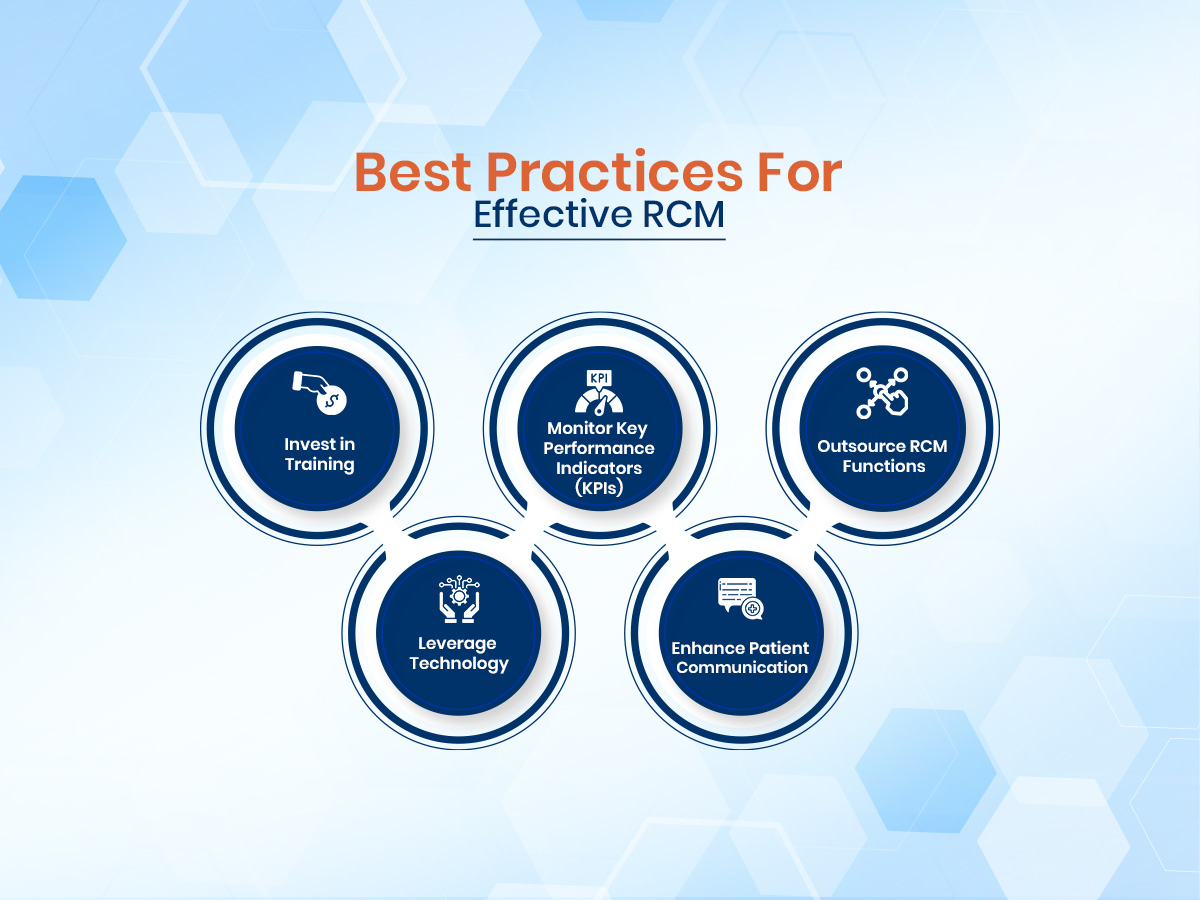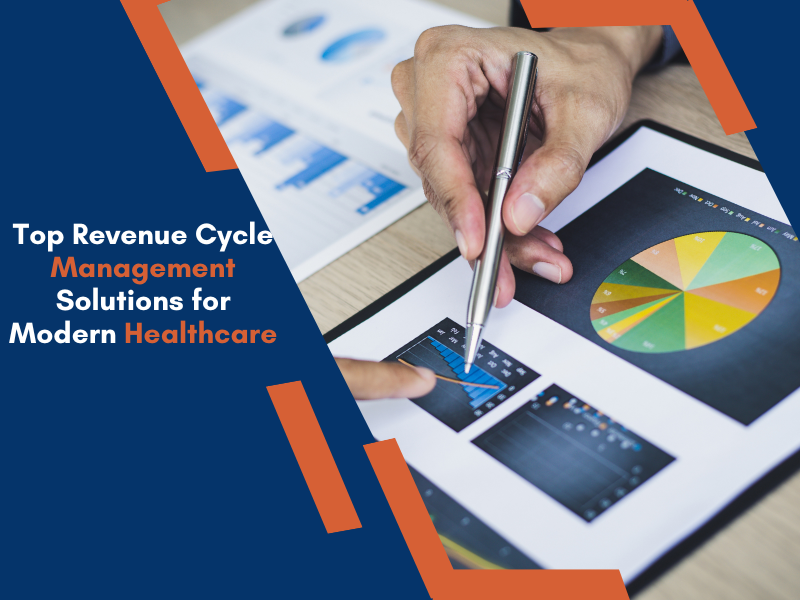Revenue Cycle Management (RCM) is a critical process that healthcare organizations utilize to manage the financial aspects of patient care, from the initial appointment to the final payment of the healthcare provider’s bill. It encompasses the entire lifecycle of a patient’s interaction with the healthcare system, starting from scheduling an appointment, verifying insurance coverage, documenting patient care, billing for services, and finally, collecting payment. Effective RCM is essential for healthcare providers to maintain financial stability, reduce administrative burdens, and ensure that they can continue to deliver high-quality care to patients.
The Key Components of Revenue Cycle Management
RCM is a multi-faceted process that includes several key components:
- Patient Scheduling and Registration:
The revenue cycle begins when a patient schedules an appointment. During this stage, accurate patient information is gathered, including personal details, insurance coverage, and the reason for the visit. Proper registration is crucial to ensure that billing and claims submission processes go smoothly. - Insurance Verification and Authorization:
Once the patient is registered, the next step is to verify their insurance coverage. This involves confirming that the patient’s insurance plan is active and determining what services are covered. For certain procedures, prior authorization from the insurance company may be required to ensure that the service will be reimbursed. - Charge Capture:
After services are rendered, healthcare providers document the care provided. This includes recording the procedures, treatments, and any other services the patient received. Accurate charge capture is vital to ensure that all billable services are accounted for. - Coding:
Medical coding is a crucial step in the Revenue Cycle Management process. It involves translating the healthcare provider’s documentation into standardized codes used for billing purposes. These codes must accurately reflect the services provided and must comply with current coding standards such as ICD-10, CPT, and HCPCS. Correct coding is essential for timely and accurate reimbursement. - Claims Submission:
Once the services are coded, a claim is generated and submitted to the patient’s insurance company for payment. The claim must include detailed information about the patient, the provider, the services rendered, and the corresponding codes. Accurate and timely claims submission is critical to avoid delays in payment. - Denial Management:
Not all claims are paid upon first submission. Some may be denied due to various reasons such as coding errors, missing information, or lack of coverage. Denial management involves identifying the reasons for the denial, correcting any errors, and resubmitting the claim. Effective denial management is essential to reduce revenue loss. - Payment Posting:
Once the claim is approved, the insurance company will make a payment to the healthcare provider. Payment posting involves recording the payment and any adjustments or write-offs. It’s important to ensure that payments are posted accurately to the patient’s account. - Patient Billing and Collections:
After the insurance payment is posted, any remaining balance is billed to the patient. This might include copayments, deductibles, or any services not covered by insurance. Timely and clear patient billing is important to reduce the likelihood of unpaid bills. If the patient does not pay the bill in a timely manner, the account may be sent to collections. - Reporting and Analytics:
RCM also involves ongoing monitoring and analysis of the revenue cycle process. Healthcare organizations use reporting and analytics to track key performance indicators (KPIs) such as claim denial rates, days in accounts receivable, and collection rates. This data helps identify areas for improvement and ensures the financial health of the organization.

The Importance of RCM in Healthcare
Revenue Cycle Management is vital to the financial health of healthcare organizations. Without effective RCM processes, healthcare providers may experience delayed payments, increased claim denials, and reduced revenue. This can lead to financial instability and may even threaten the ability of the provider to continue offering services. In addition to financial stability, RCM also plays a key role in improving patient satisfaction. By ensuring that billing processes are smooth and transparent, healthcare providers can reduce the likelihood of billing disputes and improve the overall patient experience.
Challenges in Revenue Cycle Management
While RCM is essential for healthcare providers, it is not without its challenges. Some of the common challenges include:
- Complexity of Healthcare Billing:
Healthcare billing is complex, with constantly changing regulations, coding standards, and insurance requirements. Keeping up with these changes and ensuring compliance can be challenging for healthcare providers. - Denial Management:
Managing claim denials is a time-consuming process that requires careful attention to detail. Providers must identify the reasons for denials, correct any errors, and resubmit claims in a timely manner to avoid revenue loss. - Patient Payments:
With the rise of high-deductible health plans, patients are increasingly responsible for a larger portion of their healthcare costs. Collecting payments from patients can be challenging, particularly if they are unable or unwilling to pay their bills. - Data Management and Security:
RCM involves handling large amounts of sensitive patient data. Ensuring that this data is accurate, up-to-date, and secure is a significant challenge. Healthcare providers must comply with regulations such as the Health Insurance Portability and Accountability Act (HIPAA) to protect patient information. - Technological Integration:
Many healthcare organizations use multiple systems to manage different aspects of the revenue cycle. Integrating these systems and ensuring that they communicate effectively can be challenging. Inadequate integration can lead to data silos, errors, and inefficiencies in the RCM process.
Best Practices for Effective RCM
To overcome these challenges and ensure effective Revenue Cycle Management, healthcare providers can adopt several best practices:
- Invest in Training:
Ensuring that staff members are well-trained in the latest billing, coding, and regulatory requirements is essential for minimizing errors and improving efficiency in the RCM process. - Leverage Technology:
Utilizing advanced RCM software can help automate many aspects of the revenue cycle, reduce errors, and improve efficiency. For example, automation can be used for tasks such as eligibility verification, claims submission, and denial management. - Monitor Key Performance Indicators (KPIs):
Regularly monitoring KPIs such as days in accounts receivable, claim denial rates, and collection rates can help healthcare providers identify areas for improvement and take corrective action. - Enhance Patient Communication:
Clear and transparent communication with patients about their financial responsibilities can help reduce billing disputes and improve payment collections. Providing patients with easy-to-understand bills and offering multiple payment options can also improve collections. - Outsource RCM Functions:
For some healthcare providers, outsourcing RCM functions to a specialized company can be a cost-effective way to improve efficiency and reduce administrative burdens. Outsourcing can also provide access to expertise and technology that may not be available in-house.

Conclusion
Revenue Cycle Management is a vital process for healthcare providers that impacts both their financial health and their ability to deliver quality care. By understanding the key components of RCM, recognizing the challenges involved, and adopting best practices, healthcare organizations can ensure that they maintain a healthy revenue stream while providing excellent patient care. In a constantly evolving healthcare landscape, effective RCM is more important than ever for ensuring the sustainability and success of healthcare providers.





